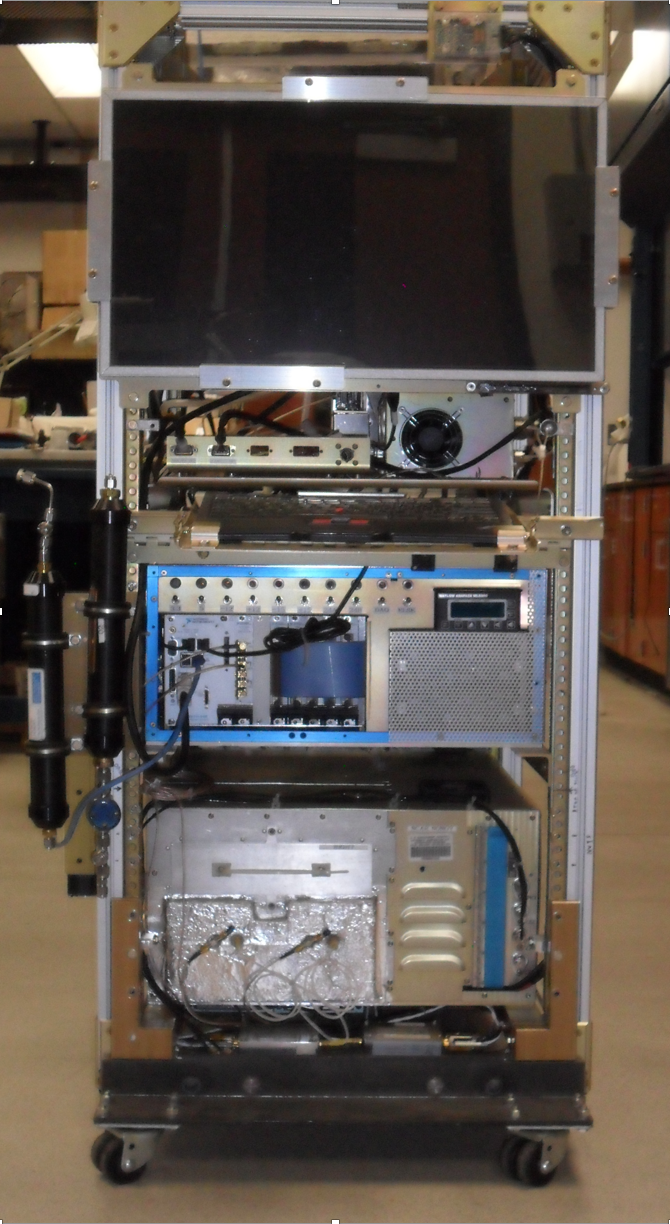NOx and O3 Chemiluminescence

Two-Channel chemiluminescence instrument
The two channel instrument is based on the chemiluminescence detection of NO via reaction with O3 to form excited NO2, which is detected via photon counting. One sample channel is used to measure nitric oxide, NO, and the second measures nitrogen dioxide, NO2, by flowing ambient air through a glass cell illuminated by light-emitting diodes (LEDs) at 395 nm, for the conversion of NO2 to NO via photolysis. The instrument is similar to instruments previously built at NCAR (Ridley and Grahek, 1990; Ridley et al., 2004). The two-channel detector box is at the core of the instrument and includes the reaction vessels, zero volumes, and photomultiplier tubes for simultaneous detection of two sample flows, together with a number of flow controllers (for calibration flows, O3 reagent flows, zero-air flows) and pressure transducers. A second box houses the computer for data acquisition and instrument control, together with power supplies, and a third box houses two ozonizers which produce O3 for reaction with NO to enable detection via production of excited NO2. Additionally, there is a vacuum pump, three gas bottles (zero air, O2 for O3 generation, and NO-in-N2 calibration gas), and inlet components (photolytic converter for NO2, identical dummy cell for NO, two sample flow controllers, valves for calibration gas addition). Dry ice is required for PMT cooling. The precision of 1-s values is estimated to be in the range of 5-10 pptv, dependent on performance characteristics to be determined in flight. Overall uncertainty of 1-sec values is estimated to be 10% or better for large mixing ratios (> 50 pptv).
HAIS Fast-Ozone chemiluminescence instrument